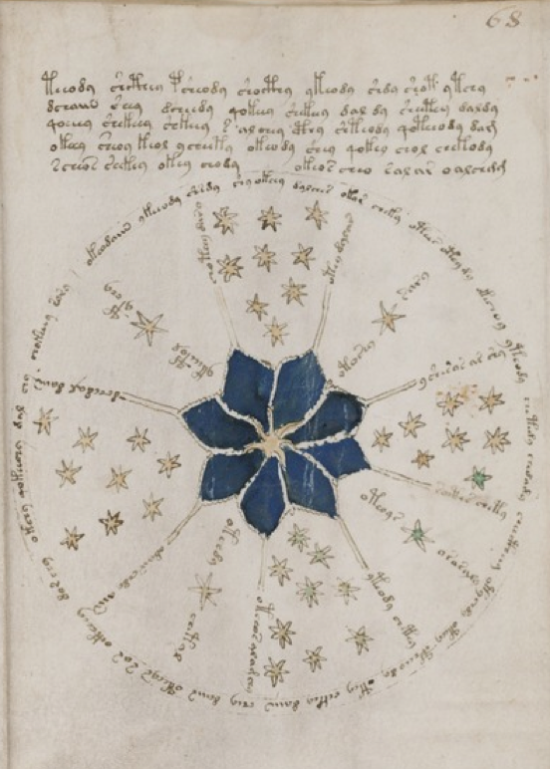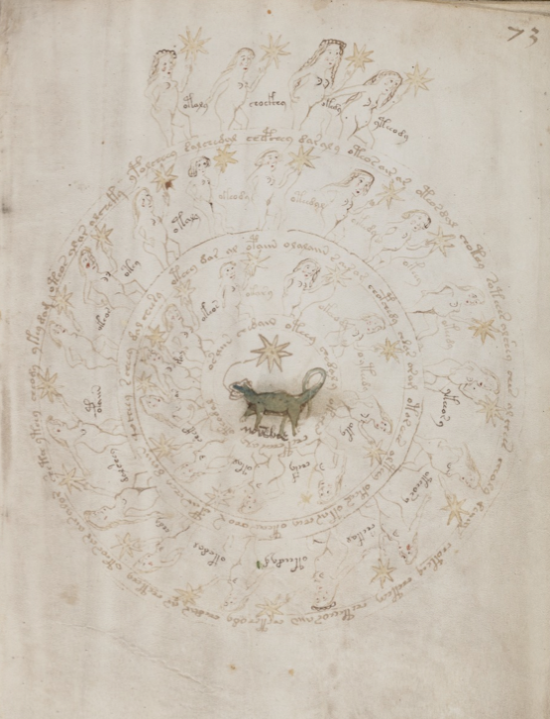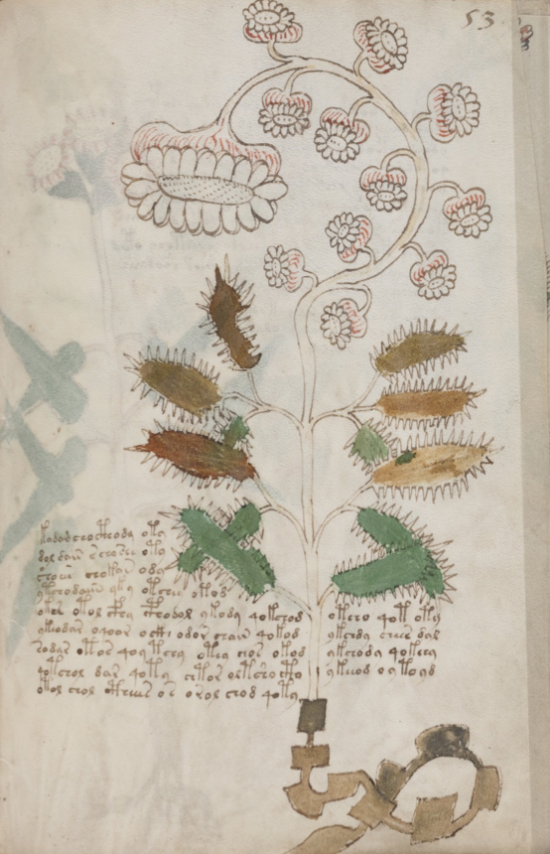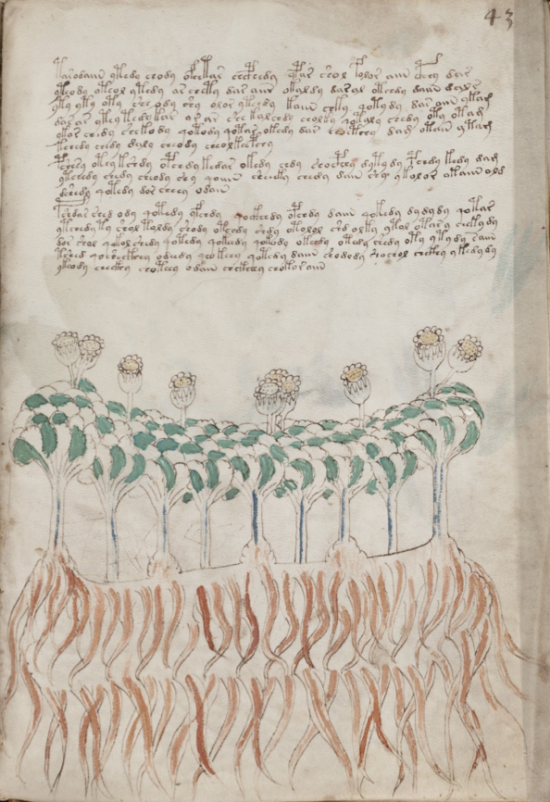The Voynich manuscript is an illustrated codex hand-written in an unknown writing system. The book has been carbon-dated to the early 15th century (1404–1438), and may have been composed in Northern Italy during the Italian Renaissance. The manuscript is named after Wilfrid Voynich, a book dealer who purchased it in 1912.
The pages of the codex are vellum. Some of the pages are missing, but about 240 remain. The text is written from left to right, and most of the pages have illustrations or diagrams. Many people have speculated that the writing might be nonsense. However, in 2013, Marcelo Montemurro of the University of Manchester and Damian Zanette of the Bariloche Atomic Centre published a paper documenting their identification of a semantic pattern in the writing; this suggests that the Voynich manuscript is a ciphertext with a message.
The Voynich manuscript has been studied by many professional and amateur cryptographers, including American and British codebreakers from both World War I and World War II. No one has yet succeeded in deciphering the text, and it has become a famous case in the history of cryptography. The mystery of the meaning and origin of the manuscript has excited the popular imagination, making the manuscript the subject of novels and speculation. None of the many hypotheses proposed over the last hundred years has yet been independently verified.
The Voynich manuscript was donated by Hans P. Kraus to Yale University's Beinecke Rare Book and Manuscript Library in 1969, where it is catalogued under call number MS 408. A digitized high-resolution copy is also accessible freely at their website. (Wikipedia)



